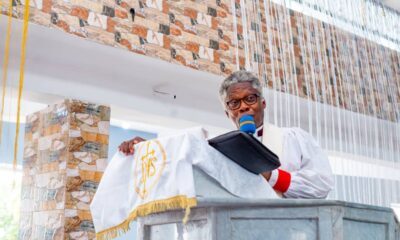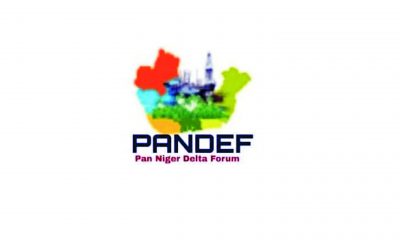Health
Results of Proactive Measures In Rivers Health Sector
Infrastructural Development
As a result of the decay the administration met on ground, there has been and is still a lot of infrastructural development going on. These have been classified under Primary, Secondary and Tertiary Health Care.
Primary Health Care
The State Government has embarked on the construction of 160 New Primary Health Centres as the first step towards replacing the existing dilapidated ones and rebuilding the entire health system, the Major Contractor is Brunel Engineering Construction Company undertaking the construction of 105 of these Model Primary Health Centres. At present, the contractor is focused on delivery only 50 in the first phase. The other 55 is to be commenced in the second phase, So far, 65 of the New Primary Health Care Centres are completed, fully equipped and furnished. Seventeen (17) are above 90% completion, 24 are below 89% completion while 2 have not commenced.
Secondary Health Care
One of the major reasons for the failure of the Professor Olikoye Ransome-Kuti’s Primary Healthcare model was the non-availability of proper referral system and centres, in order that this administration does not have the same pitfalls, simultaneous arrangements have commenced to ensure massive renovations and/or complete rebuilding and re-equipping of the General Hospitals, Niger Hospital (now Prof. Kelsey Harrison’s Hospital), the Dental Hospital and the Rivers State University of Science and Technology (RSUST) Medical Centre have been completely rebuilt.
Tertiary Health Care
The Braithwaite Memorial Specialist Hospital (BMSH) is undergoing massive renovations, rebuilding and reequipping the Radiology Department and the Clinical Laboratories have undergone massive retooling, with the Clinotech Group of Canada acting as technical partners, an ultra modern Modular Theatre Complex consisting of three operating suites, a laundry unit, sterilising unit and an oxygen manufacturing plant, with an adjoining intensive care unit has also been set up. This is equipped with the state-of-the-art equipment and facilities, we are preparing the BMSH to be the nucleus of our Teaching Hospital from which our Medical School will emerge, completion, furnishing and equipping of the Ancillary building, the Justice Adolphus Karibi-Whyte Hospital, is an ultra-specialist Hospital that would take care of most of the cases we now send abroad for treatment. Work has commenced on the project, a mother and child hospital, a Burns Centre and a Trauma Centre are other major health projects on the drawing board.
Health
‘How Micro RNA Research Won Nobel Prize’
Two United States scientists who unraveled the human micro RNA have won the Nobel Prize in Physiology or Medicine 2024.
Victor Ambros and Gary Ruvkun won the coveted prize for their work on microRNA as their discoveries help explain how complex life emerged on earth and how the human body is made up of a wide variety of different tissues.
MicroRNAs influence how genes – the instructions for life – are controlled inside organisms, including humans.
Every cell in the human body contains the same raw genetic information, locked in our DNA.
However, despite starting with the identical genetic information, the cells of the human body are wildly different in form and function.
The electrical impulses of nerve cells are distinct from the rhythmic beating of heart cells. The metabolic powerhouse that is a liver cell is distinct to a kidney cell, which filters urea out of the blood.
The light-sensing abilities of cells in the retina are different in skillset to white blood cells that produce antibodies to fight infection.
So much variety can arise from the same starting material because of gene expression.
The US scientists were the first to discover microRNAs and how they exerted control on how genes are expressed differently in different tissues.
The medicine and physiology prize winners are selected by the Nobel Assembly of Sweden’s Karolinska Institute.
They said: “Their groundbreaking discovery revealed a completely new principle of gene regulation that turned out to be essential for multicellular organisms, including humans.
“It is now known that the human genome codes for over 1,000 microRNAs.”
Health
WHO Begins Regulation On Antibiotic Waste
The World Health Organisation (WHO) has begun acting to curb effects of antibiotic pollution.
The new guidance on wastewater and solid waste management for antibiotic manufacturing sheds light on this important but neglected challenge ahead of the United Nations General Assembly (UNGA) High-Level Meeting on antimicrobial resistance (AMR) taking place on 26 September 2024.
The emergence and spread of AMR caused by antibiotic pollution could undermine the effectiveness of antibiotics globally, including the medicines produced at the manufacturing sites responsible for the pollution.
Despite high antibiotic pollution levels being widely documented, the issue is largely unregulated and quality assurance criteria typically do not address environmental emissions. In addition, once distributed, there is a lack of information provided to consumers on how to dispose of antibiotics when they are not used, for example, when they expire or when a course is finished but there is still antibiotic left over.
“Pharmaceutical waste from antibiotic manufacturing can facilitate the emergence of new drug-resistant bacteria, which can spread globally and threaten our health. Controlling pollution from antibiotic production contributes to keeping these life-saving medicines effective for everyone,” said Dr Yukiko Nakatani, WHO Assistant Director-General for AMR ad interim.
Globally, there is a lack of accessible information on the environmental damage caused by manufacturing of medicines.
“The guidance provides an independent and impartial scientific basis for regulators, procurers, inspectors, and industry themselves to include robust antibiotic pollution control in their standards,” said Dr Maria Neira, Director, Department of Environment, Climate Change and Health, WHO. “Critically, the strong focus on transparency will equip buyers, investors and the general public to make decisions that account for manufacturers’ efforts to control antibiotic pollution.”
Health
Kebbi Harmonises Doctors’ Salaries To Curb Brain Drain
In a concerted effort to curb brain drain, the Kebbi State Government has harmonised medical doctors’ salaries to be at par with their colleagues in the federal government’s tertiary health facilities.
Kebbi State Commissioner for Health, Musa Inusa-Isma’il, disclosed this at the handing over of ambulances to the state-owned health facilities at the Ministry of Health in Birnin Kebbi yesterday.
Inusa Isma’il, according to a statement by Ahmed Idris, the Chief Press Secretary to the governor, said the essence of the harmonisation was to retain the existing medical doctors and attract more to the services of the state.
According to him, the doctors across the state had already started enjoying the new salaries from August 2024.
He said the release of the vehicles was in fulfilment of Governor Nasir Idris’ promise to uplift health care services in the state.
“His Excellency said I should inform you, the beneficiaries of this gesture, that the vehicle should be strictly used for the intended purpose. It should not be used for anything else.
“If there is no referral case, each of the vehicles must be parked at the hospital by 6 pm. The governor said you should warn your drivers against reckless driving as well as violating the instructions.
“We should also do everything possible to reciprocate the gesture by working according to the terms and conditions attached,” he advised.
The benefiting health facilities included Sir Yahaya Memorial Hospital, Birnin Kebbi; State Teaching Hospital, Kalgo; General Hospital, Argungu; General Hospital, Yauri; General Hospital, Zuru; and General Hospital, Bunza.
In his speech, the permanent secretary of the ministry, Dr Shehu Koko, recalled that the ambulances were handed over to the ministry last Friday by the governor for the onward handover to the benefiting hospitals.
He observed that the ambulances would go a long way in improving the referral system in the state, adding that delays in reaching the secondary and tertiary facilities would be eliminated.
The permanent secretary attributed the high rate of maternal mortality in the country to delays in getting to the health facilities for proper medical care.
“We believe with the provision of these ambulances, part of the gaps we have in our referral system will be addressed, whereby patients who require secondary healthcare could be easily transported to secondary and tertiary health centres, where they can get such help,” he said.
In a goodwill message, Commissioner for Information and Culture Alhaji Yakubu Ahmed expressed gratitude to the governor for the support he has given to the ministry to excel.
While advising the beneficiaries to use the vehicles judiciously, the commissioner advised that services and maintenance of the vehicles must be prompt to derive the maximum benefits from the vehicles.
The commissioner also highlighted some achievements recorded by the government in the last year, including beautification of the state capital, completion of a multimillion-naira ultramodern state secretariat, road construction, construction and renovation of classrooms and upgrading of some health facilities, among others.
-
News5 days ago
Fubara Applauds IGP For Donating Gunboats To Rivers Police
-
Business5 days ago
Experts Predict Inflation Hike In N54.99trn 2025 Budget
-

 Niger Delta5 days ago
Niger Delta5 days agoJoint Provincial Council, East Of The Niger Salutes Diocese Of Evo
-
Sports5 days ago
NPFL : Finidi Optimistic To Get Three Points In Uyo
-
Politics5 days ago
100 Days In Office: Lawmaker Passes Confidence Vote On Council Boss
-

 News5 days ago
News5 days agoWhy We Need S’South Dev Commission – Sara Igbe
-
Business5 days ago
NCS Hands Over Intercepted Arms To NCCSALW
-

 News5 days ago
News5 days agoFubara Graces Agric Commissioner’s Wedding At Ciwa

